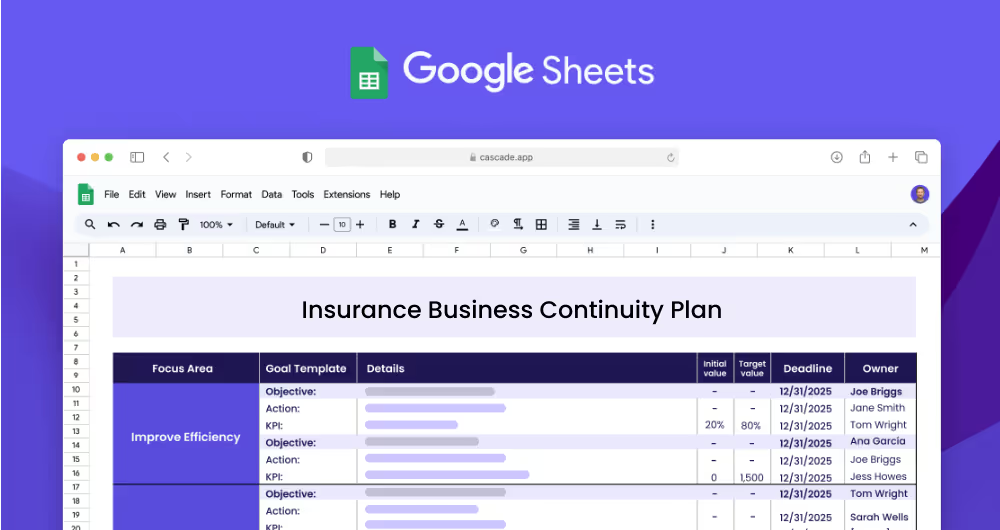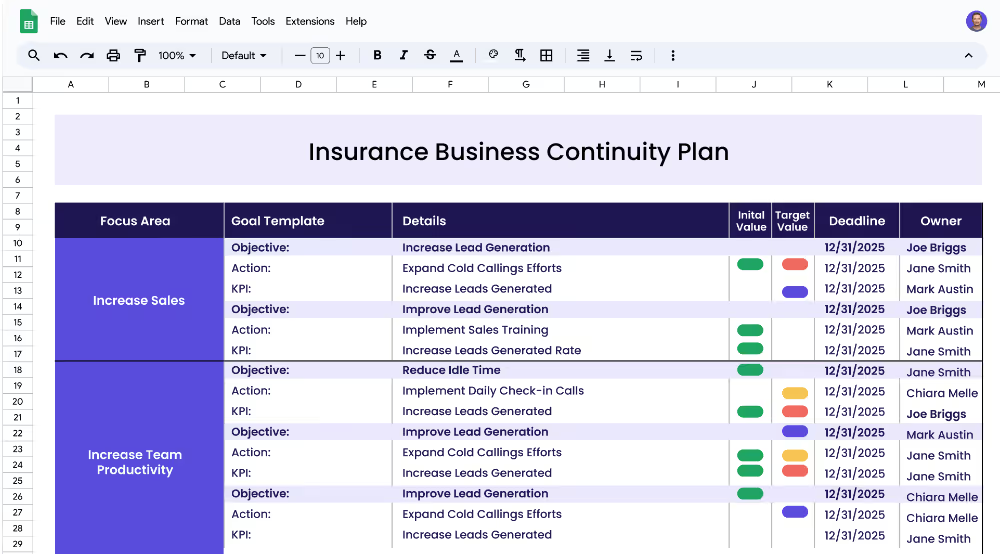An Insurance Business Continuity Plan (BCP) is a strategic plan that outlines the procedures and protocols to be followed in the event of a significant disruption or disaster that could affect the operations of an insurance company. The primary goal of an insurance BCP is to ensure that the company can continue to function and provide essential services to its policyholders during and after such an event.
Each focus area has its own objectives, projects, and KPIs to ensure that the strategy is comprehensive and effective.
This Insurance Business Continuity Plan template is designed for insurance companies and providers to establish their business continuity plans, addressing the continuity of insurance services, claims processing, and customer support during emergencies or unexpected events. This template provides the steps needed to create an effective business continuity plan and outlines the actions, processes and resources necessary to ensure the continuity of insurance services.
Focus areas are the major topics or areas that need to be addressed in the business continuity plan. For insurance companies, the focus areas could include business continuity, risk management, and data protection. Each area should have a set of objectives that need to be achieved in order to ensure the continuity of insurance services.
Objectives are the specific goals that need to be achieved in order to ensure the continuity of insurance services. These objectives should be specific, measurable, and achievable in order to ensure the success of the plan. Examples of objectives could include ensuring insurance services continuity, ensuring claims processing continuity, assessing risks, and protecting data.
KPIs, or Key Performance Indicators, are measurable targets that can be used to monitor and measure progress toward the objectives. KPIs should be measurable and have a target value, initial value, and unit of measurement associated with them. Examples of KPIs could include reducing contingency plan implementation time, reducing average claims processing time, increasing risk assessment coverage, and increasing encrypted data.
Projects are the actions necessary to achieve the KPIs and objectives. These projects should be specific, achievable, and should have a timeline or deadline associated with them. Examples of projects could include developing a business continuity plan, implementing automated claims processing systems, identifying potential risks, and implementing data encryption.
If you’re ready to advance your strategy and see quicker results, Cascade Strategy Execution Software is here to guide you every step of the way. Unlike traditional spreadsheets, Cascade provides a dynamic platform that enhances real-time updates, centralized collaboration, and automated reporting. This ensures your team can effectively track progress, adapt swiftly, and remain aligned throughout your strategic execution. Enhance your strategy management with tools like visual dashboards that integrate planning and execution effortlessly. Sign-up for free or book a demo with one of our strategy experts and move towards operational resilience efficiently.


